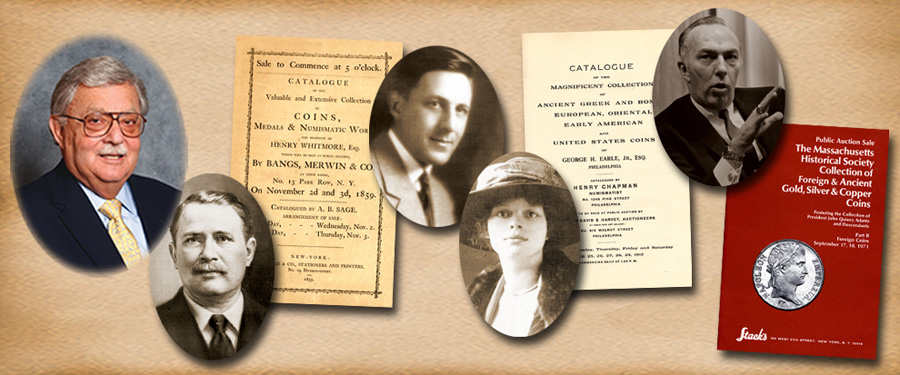
Stack’s and Stack’s Bowers Galleries have sold hundreds of collections since 1935, and many owners were well known collectors from the United States as well as all parts of the world. A large number of these collectors did all they could to retain the pedigrees that came with the coins or to do endless hours of research to try and trace pedigrees. As astute collectors, they knew that if they could connect a coin to a previous auction, price list, reference book or article in a numismatic publication, this could stimulate interest in the coin and thereby help increase its market value at the time of sale.
You may ask, "How far back does a pedigree have to go in order to add to marketability?" Some important collections have been assembled in only a decade, while others may take many decades. A lot has to do with a collector’s interest and available capital and, especially, with the availability of the items he or she seeks. A particular coin must come on the market and its grade has to suit the buyer’s collection. If that coin comes with or can be linked to a pedigree so much the better. Any pedigree is better than none, and a pedigree that goes back decades and has stayed with a coin is an extremely valuable attribute. Some coins can be traced back 100 years or more, making it ever more desirable.
In my dealings over 65 years and my exposure to many collections by specialists and collecting families in America, the one that has greatest longevity that of the famous Adams family. The Adams family of Massachusetts is well know since of colonial days and through the first 60 years of our independence after the Revolutionary War.
John Adams, a pre-revolution statesman, foreign minister and politician, not only worked to gain America’s independence but he spent many a year in Europe trying to find allies to support our cause. He met with those who had the power and means to help us free ourselves from British rule. He was overseas in the 1760s with his family and returned to his home in Massachusetts whenever needed. He was also an excellent financer, and he was intrigued by the coins then circulating in Europe and the older ones he found there. So he started to build a collection, and when he was home in the colonies he collected the colonial and state coins he encountered. He wanted to have examples of coins that played a role in world finances.
As history reveals, John Adams was elected to be America’s vice president under George Washington, and then chosen as its second president when Washington stepped down after two terms. His interests in assembling numismatic items continued, and his son John Quincy Adams (who became the sixth president of the United States), enhanced the collection with specimens he accumulated as an ambassador to Europe and a statesman at home. As a result of the Napoleonic Wars, many ancient coins became available in Europe and John Quincy Adams added them to the collection. He also continued collecting early world coins that were available during his travels. In the next chapter of this story I will tell what happened to this handpicked numismatic collection assembled by our forefathers, the Adams family.





